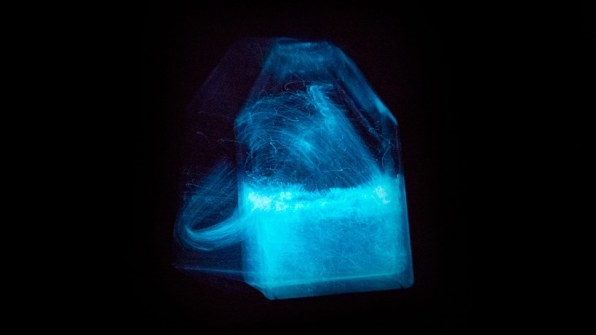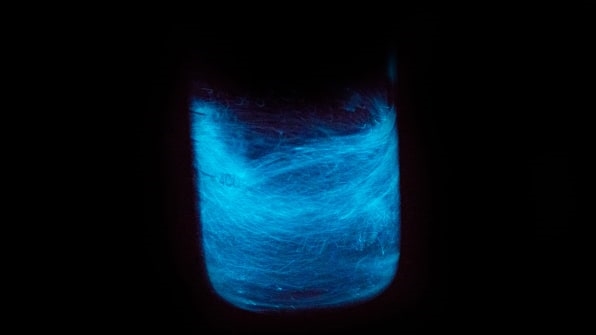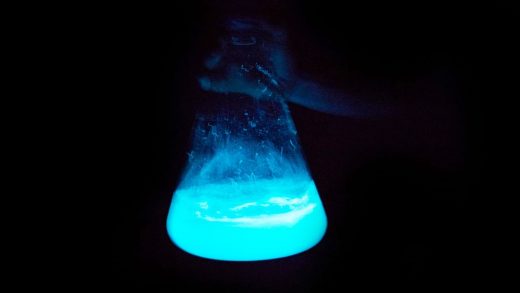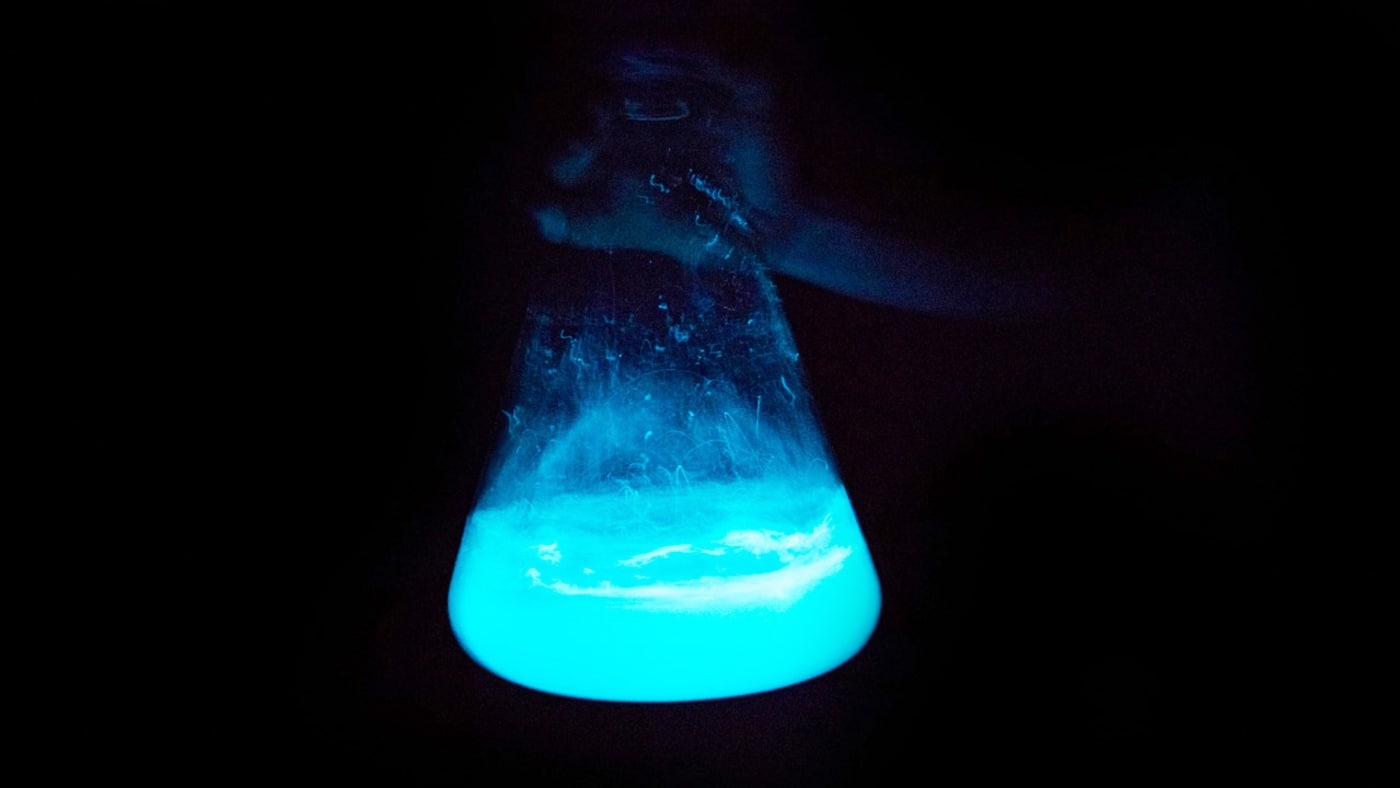Imagine a city lit by glowing trees instead of streetlights
If you happened to be in San Diego last week and stood on the beach at night, you might have seen the ocean glowing an electric shade of blue as bioluminescent algae bloomed, a relatively rare natural phenomenon. In a lab in Denmark, researchers are trying to isolate the genes that makes the microalgae glow for another purpose: potential natural streetlights.
If the genes could be tweaked and added to trees, they say, it could be possible for trees to stand in for standard street lighting. “We could try to change some of that lighting from conventional, electricity-consuming lights to a more natural way of creating light,” says Kristian Ejlsted, CEO of Allumen, a new startup based near Copenhagen.
Ejlsted began researching bioluminescent algae as a student at the Technical University of Denmark, and his startup now sells kits with the algae that teachers can use to help visually explain photosynthesis, respiration, and other natural processes in science classes. Another product, for home use, will be a little like a lava lamp, with algae living in a saltwater-nutrient mixture, taking up sunshine during the day, and glowing at night. But Ejlsted is most interested in the larger potential for the genes that make the algae glow.
The tens of thousands of streetlights in large cities can make up, in some cases, the largest piece of city’s energy bills. Over the last decade, cities have increasingly switched from older technology to LED lights; in Los Angeles, for example, where the city began switching its 200,000-plus streetlight to LEDs in 2013, it cut energy use for the lights by more than 63%, saving nearly $10 million a year on energy and maintenance bills. But the lights are still a major source of emissions.

“In Denmark, almost all streetlights are now being replaced by LED lights,” Ejlsted says. “That’s a huge deal right now, and it’s going to save a lot of energy. But the fact is that they’re still using electricity–they’re using a little bit less, but it’s still electricity, and it still comes from burning fossil fuels. The real advantage of changing to a biological system is that the algae, for example, or the plant, they only need CO2 and sunlight and some water.”
The company is not the first to explore the idea of glowing plants and trees. One Kickstarter project, the Glowing Plant, raised nearly half a million dollars, but later told backers they’d failed in their quest to genetically engineer small plants that could glow. A team of researchers at MIT embedded nanoparticles with an enzyme from fireflies into plants, creating a faint glow. In France, biologist Pierre Calleja is experimenting with prototypes of lamps filled with glowing microalgae. Designer Daan Roosegaarde has also experimented with the idea of glowing trees.

Any project like this presents ethical challenges, says Dimitri Deheyn, a researcher at Scripps Institution of Oceanography. “The problem remains the same on the ethics of using genetically engineered trees,” he says. “What happens to the animals and plants that surround them, cross-fertilize with them, or feed on them?”
The projects are also far from reality. Eljsted, who continues to work with researchers at the university, believes that the relevant genes in the microalgae he’s studying can be found relatively quickly. “I think we’re very close to getting it,” he says. But several more complicated steps would also have to happen to make that gene perform as needed in a tree. The blue light may also not be bright enough, without more tweaking, to stand in for LEDs.
Denmark is aiming for all-renewable electricity by 2035, and it’s possible it will be close to that goal by the time a theoretical bioluminescent light becomes a reality. But if the lights are ever made, they could potentially have some advantages over lights powered by renewable electricity. Even if every streetlight ran on renewables, that energy source (and the streetlights themselves) would still take resources to build and operate. Gene-edited glowing trees, if they can be grown, could theoretically eliminate the need to manufacture that equipment, would require little cost, and zero electricity. They also would be efficient. “Algae and plants have evolved through billions of years to very efficiently capture sunlight,” says Eljsted. “We can’t really recreate that yet in solar panels.”
Fast Company , Read Full Story
(35)



